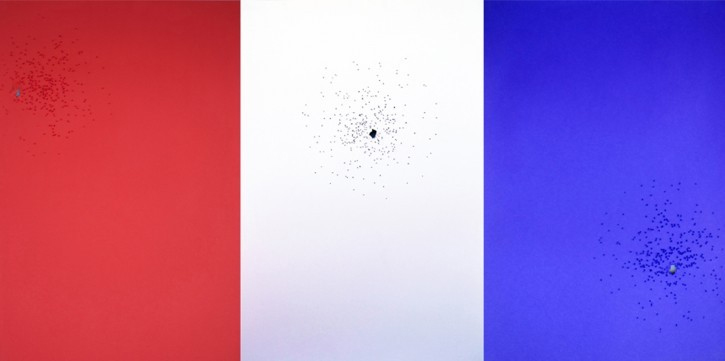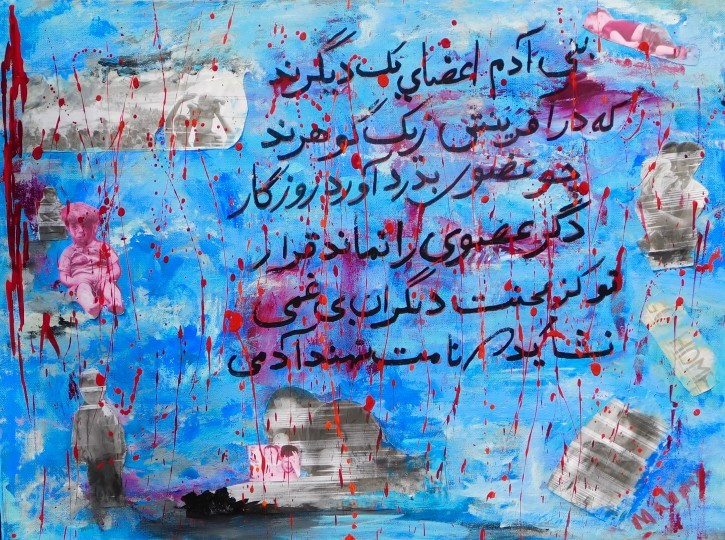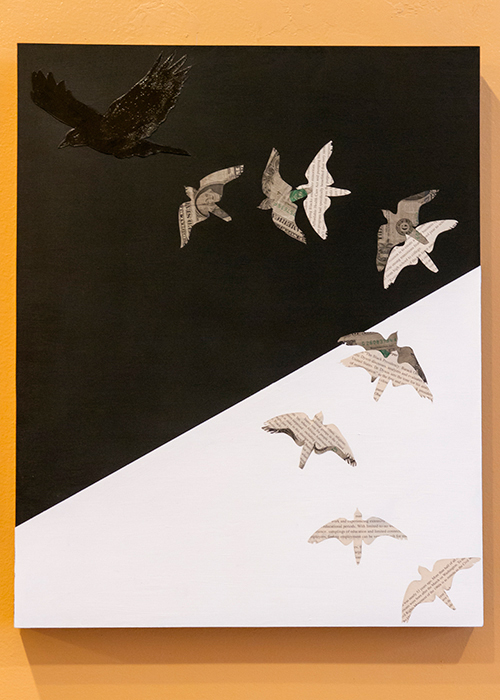In the final, 60th panel of The Migration Series, Jacob Lawrence leaves us with the words “And the migrants keep coming.” The story of migration is ongoing; what would the 61st panel look like today? Featured below are some thoughtful responses to this question by local artists. Submit your #Panel61 on our recently launched Jacob Lawrence website.
Mahnaz Weldy
In this piece, Humanity in Pain, I tried to show that we all are connected to one another, and if we have any conscious, then suffering of others should pain us all. I aimed to not only paint the pain and suffering, but also the human resilience and strength to survive the unimaginable. My work is a combination of acrylic, collage and chalk on canvas.

Panel 61 submission: Jenny E. Balisle, “America Red, White and Blue.” 39 x 108 in. Colorplan paper and a Mossberg 500 shotgun
Jenny E. Balisle
The America series investigates diverse cultures and relationships between man-made and natural environments. Fascinated by flight or disorientation, I merge together disparate experiences to create new narratives. Colorplan sheets of cover stock sized 25 x 38 inches were brought to a gun range. Using a Mossberg 500 shotgun as a vehicle of mark making, paper was placed on a target seven yards away. The artwork records how patterns of power and inequality can be spread through distance and speed. It re-purposes a weapon into artistic commentary by altering function to explore identity, ideology, and equality. The paper represents life’s fragility and the pellet pattern explores America’s gun culture and military-industrial complex. The goal is to engage conversation on what it means to be American as a citizen and through a global context. The artwork reclaims social justice and questions what is normal. The orientation of the paper has been turned to face the viewer, confronting and asking by what means and price do we secure freedom for all at home and abroad.









